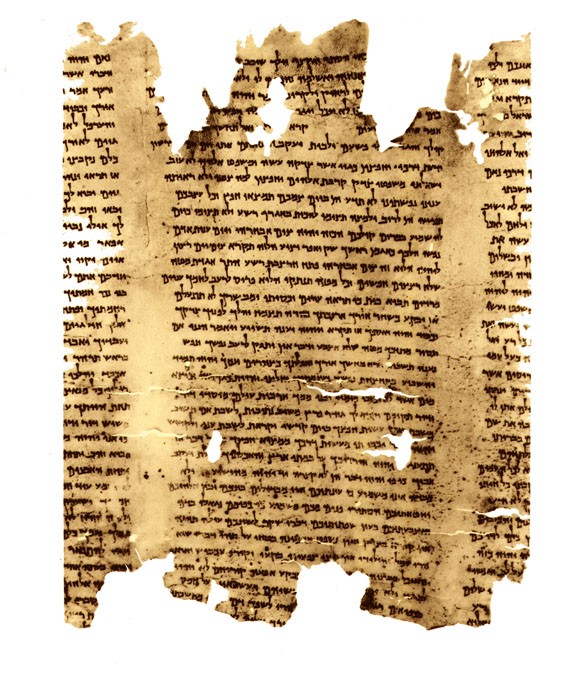The Times of Israel reports, as announced by Archaeology, that one of the last few Dead Sea Scrolls untranslated until this point has been deciphered. From the Times:
Written in encrypted ancient Hebrew, one of the last unpublished Dead Sea Scrolls has finally been deciphered by a University of Haifa post-doctoral researcher. According to Dr. Eshbal Ratson, the almost impossible year-long mission was like “putting together a jigsaw puzzle — without knowing what was the picture.”
Using hi-tech images provided by the Israel Antiquity Authority’s Leon Levy Dead Sea Scrolls Digital Library, Ratson, 38, spent countless hours in front of her computer manipulating, deciphering and joining the 60 minuscule “puzzle pieces” which now form a comprehensive “calendrical scroll,” a document which outlines the intricate mathematical computations used by the Qumran sect to set the rhythm of their year and way of life.
Notes on the margin, rather than the main text itself, ended up being the key to translation:
Extremely fragile, the scroll’s 60 fragments were grouped together decades ago with other encrypted Hebrew fragments and assembled on plates by early Dead Sea Scroll researchers. One, the Catholic priest Józef T. Milik, felt the fragments came from one scroll. The other, Stephen J. Pfann, thought they came from six different scrolls. Unfortunately, neither of the researchers left notes on their work, but Ratson said she took cues from how the fragments were laid out on the plate.
The scroll’s dark brown parchment fragments range in size from 3.9 cm × 2.8 cm for the largest fragment to numerous small pieces no larger than 1.5 cm × 1.5 cm. Ratson said she used a photo processing program similar to Photoshop to enlarge and manipulate the slivers of words.
Slowly, as Ratson shifted and joined fragments on her computer screen, she noted a very long, twisting and turning marginal note that she said “was key for deciphering the scroll.”
The note, which is a detailed account of how to observe the esoteric Feast of Wood Offering, was broken in about six fragments. It began between two columns, but suddenly, the direction of the writing shifted, causing her to wonder whether it was indeed the same comment. In the Haifa labs, doctoral student Asaf Gayer suggested that perhaps the scribe merely ran out of space between the columns and so changed direction.
Based on Gayer’s comment, she reassembled the pieces of the margin note’s two-direction writing. This allowed Ratson to connect pieces of different columns, creating more cohesion in the swiss-cheese-like text.
National Geographic explains the holy days that the text outlines, and its authors:
The scroll names celebrations that indicate shifts in seasons as “Tekufah,” which is Hebrew for “period.” These celebrations have been known from other texts but have not been officially named until now.
It also details two religious events known from another Dead Sea Scroll. The festivals, for New Wine and for New Oil, would have been tacked onto the Jewish harvest festival Shavuot 100 and 150 days after the first Sabbath of Passover, respectively.
This scroll also gives information about its authors, who would have roamed the region’s desert between the second century BC and second century AD. Dates for the aforementioned celebrations appear to have been scribbled in the margins between columns of text, giving the impression that they were added to the scroll by one person after it was authored by another.
Image: part of the Isaiah scroll

